Honeywell 2003 Annual Report Download - page 356
Download and view the complete annual report
Please find page 356 of the 2003 Honeywell annual report below. You can navigate through the pages in the report by either clicking on the pages listed below, or by using the keyword search tool below to find specific information within the annual report.-
 1
1 -
 2
2 -
 3
3 -
 4
4 -
 5
5 -
 6
6 -
 7
7 -
 8
8 -
 9
9 -
 10
10 -
 11
11 -
 12
12 -
 13
13 -
 14
14 -
 15
15 -
 16
16 -
 17
17 -
 18
18 -
 19
19 -
 20
20 -
 21
21 -
 22
22 -
 23
23 -
 24
24 -
 25
25 -
 26
26 -
 27
27 -
 28
28 -
 29
29 -
 30
30 -
 31
31 -
 32
32 -
 33
33 -
 34
34 -
 35
35 -
 36
36 -
 37
37 -
 38
38 -
 39
39 -
 40
40 -
 41
41 -
 42
42 -
 43
43 -
 44
44 -
 45
45 -
 46
46 -
 47
47 -
 48
48 -
 49
49 -
 50
50 -
 51
51 -
 52
52 -
 53
53 -
 54
54 -
 55
55 -
 56
56 -
 57
57 -
 58
58 -
 59
59 -
 60
60 -
 61
61 -
 62
62 -
 63
63 -
 64
64 -
 65
65 -
 66
66 -
 67
67 -
 68
68 -
 69
69 -
 70
70 -
 71
71 -
 72
72 -
 73
73 -
 74
74 -
 75
75 -
 76
76 -
 77
77 -
 78
78 -
 79
79 -
 80
80 -
 81
81 -
 82
82 -
 83
83 -
 84
84 -
 85
85 -
 86
86 -
 87
87 -
 88
88 -
 89
89 -
 90
90 -
 91
91 -
 92
92 -
 93
93 -
 94
94 -
 95
95 -
 96
96 -
 97
97 -
 98
98 -
 99
99 -
 100
100 -
 101
101 -
 102
102 -
 103
103 -
 104
104 -
 105
105 -
 106
106 -
 107
107 -
 108
108 -
 109
109 -
 110
110 -
 111
111 -
 112
112 -
 113
113 -
 114
114 -
 115
115 -
 116
116 -
 117
117 -
 118
118 -
 119
119 -
 120
120 -
 121
121 -
 122
122 -
 123
123 -
 124
124 -
 125
125 -
 126
126 -
 127
127 -
 128
128 -
 129
129 -
 130
130 -
 131
131 -
 132
132 -
 133
133 -
 134
134 -
 135
135 -
 136
136 -
 137
137 -
 138
138 -
 139
139 -
 140
140 -
 141
141 -
 142
142 -
 143
143 -
 144
144 -
 145
145 -
 146
146 -
 147
147 -
 148
148 -
 149
149 -
 150
150 -
 151
151 -
 152
152 -
 153
153 -
 154
154 -
 155
155 -
 156
156 -
 157
157 -
 158
158 -
 159
159 -
 160
160 -
 161
161 -
 162
162 -
 163
163 -
 164
164 -
 165
165 -
 166
166 -
 167
167 -
 168
168 -
 169
169 -
 170
170 -
 171
171 -
 172
172 -
 173
173 -
 174
174 -
 175
175 -
 176
176 -
 177
177 -
 178
178 -
 179
179 -
 180
180 -
 181
181 -
 182
182 -
 183
183 -
 184
184 -
 185
185 -
 186
186 -
 187
187 -
 188
188 -
 189
189 -
 190
190 -
 191
191 -
 192
192 -
 193
193 -
 194
194 -
 195
195 -
 196
196 -
 197
197 -
 198
198 -
 199
199 -
 200
200 -
 201
201 -
 202
202 -
 203
203 -
 204
204 -
 205
205 -
 206
206 -
 207
207 -
 208
208 -
 209
209 -
 210
210 -
 211
211 -
 212
212 -
 213
213 -
 214
214 -
 215
215 -
 216
216 -
 217
217 -
 218
218 -
 219
219 -
 220
220 -
 221
221 -
 222
222 -
 223
223 -
 224
224 -
 225
225 -
 226
226 -
 227
227 -
 228
228 -
 229
229 -
 230
230 -
 231
231 -
 232
232 -
 233
233 -
 234
234 -
 235
235 -
 236
236 -
 237
237 -
 238
238 -
 239
239 -
 240
240 -
 241
241 -
 242
242 -
 243
243 -
 244
244 -
 245
245 -
 246
246 -
 247
247 -
 248
248 -
 249
249 -
 250
250 -
 251
251 -
 252
252 -
 253
253 -
 254
254 -
 255
255 -
 256
256 -
 257
257 -
 258
258 -
 259
259 -
 260
260 -
 261
261 -
 262
262 -
 263
263 -
 264
264 -
 265
265 -
 266
266 -
 267
267 -
 268
268 -
 269
269 -
 270
270 -
 271
271 -
 272
272 -
 273
273 -
 274
274 -
 275
275 -
 276
276 -
 277
277 -
 278
278 -
 279
279 -
 280
280 -
 281
281 -
 282
282 -
 283
283 -
 284
284 -
 285
285 -
 286
286 -
 287
287 -
 288
288 -
 289
289 -
 290
290 -
 291
291 -
 292
292 -
 293
293 -
 294
294 -
 295
295 -
 296
296 -
 297
297 -
 298
298 -
 299
299 -
 300
300 -
 301
301 -
 302
302 -
 303
303 -
 304
304 -
 305
305 -
 306
306 -
 307
307 -
 308
308 -
 309
309 -
 310
310 -
 311
311 -
 312
312 -
 313
313 -
 314
314 -
 315
315 -
 316
316 -
 317
317 -
 318
318 -
 319
319 -
 320
320 -
 321
321 -
 322
322 -
 323
323 -
 324
324 -
 325
325 -
 326
326 -
 327
327 -
 328
328 -
 329
329 -
 330
330 -
 331
331 -
 332
332 -
 333
333 -
 334
334 -
 335
335 -
 336
336 -
 337
337 -
 338
338 -
 339
339 -
 340
340 -
 341
341 -
 342
342 -
 343
343 -
 344
344 -
 345
345 -
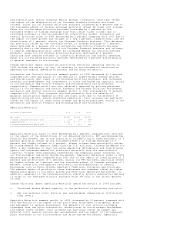 346
346 -
 347
347 -
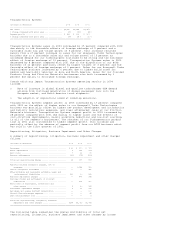 348
348 -
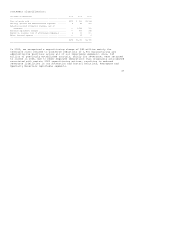 349
349 -
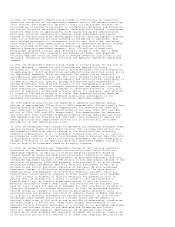 350
350 -
 351
351 -
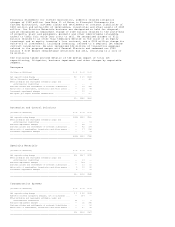 352
352 -
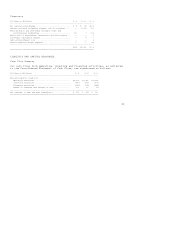 353
353 -
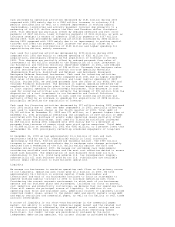 354
354 -
 355
355 -
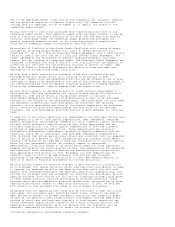 356
356 -
 357
357 -
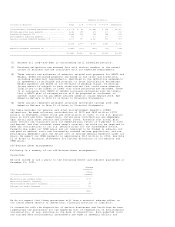 358
358 -
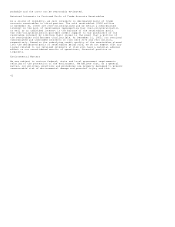 359
359 -
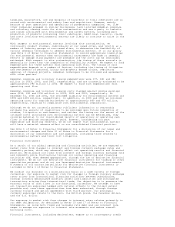 360
360 -
 361
361 -
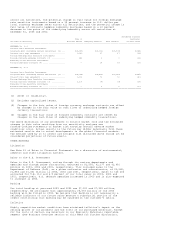 362
362 -
 363
363 -
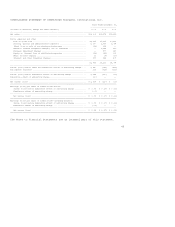 364
364 -
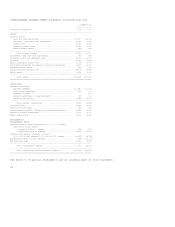 365
365 -
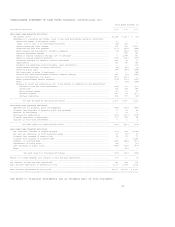 366
366 -
 367
367 -
 368
368 -
 369
369 -
 370
370 -
 371
371 -
 372
372 -
 373
373 -
 374
374 -
 375
375 -
 376
376 -
 377
377 -
 378
378 -
 379
379 -
 380
380 -
 381
381 -
 382
382 -
 383
383 -
 384
384 -
 385
385 -
 386
386 -
 387
387 -
 388
388 -
 389
389 -
 390
390 -
 391
391 -
 392
392 -
 393
393 -
 394
394 -
 395
395 -
 396
396 -
 397
397 -
 398
398 -
 399
399 -
 400
400 -
 401
401 -
 402
402 -
 403
403 -
 404
404 -
 405
405 -
 406
406 -
 407
407 -
 408
408 -
 409
409 -
 410
410 -
 411
411 -
 412
412 -
 413
413 -
 414
414 -
 415
415 -
 416
416 -
 417
417 -
 418
418 -
 419
419 -
 420
420 -
 421
421 -
 422
422 -
 423
423 -
 424
424 -
 425
425 -
 426
426 -
 427
427 -
 428
428 -
 429
429 -
 430
430 -
 431
431 -
 432
432 -
 433
433 -
 434
434 -
 435
435 -
 436
436 -
 437
437 -
 438
438 -
 439
439 -
 440
440 -
 441
441 -
 442
442 -
 443
443 -
 444
444
 |
 |
due to the depressed market conditions in the commercial air transport industry
and our potential exposure to asbestos liabilities. The "negative outlook"
ratings have not impaired, nor do we expect it to impair, our access to the
commercial paper markets.
We may from time to time issue unsecured short-term promissory notes in the
commercial paper market. The commercial paper notes may bear interest or may be
sold at a discount and have a maturity of not more than 364 days from date of
issuance. Borrowings under the commercial paper program are available for
general corporate purposes as well as for financing potential acquisitions.
There was no commercial paper outstanding at year-end 2003.
We maintain $2.3 billion of Revolving Credit Facilities with a group of banks,
arranged by Citigroup Global Markets Inc. and J.P. Morgan Securities Inc.,
comprised of: (a) a $1.3 billion Five-Year Credit Agreement, with a $300 million
letter of credit sub-limit and (b) a $1 billion 364-Day Credit Agreement. The
credit agreements are maintained for general corporate purposes, including
support for the issuance of commercial paper. The Five-Year Credit Agreement was
increased in November 2003 from $1 billion to $1.3 billion with the addition of
a $300 million sub-limit for the potential issuance of letters of credit. See
Note 15 of Notes to Financial Statements for details of long term debt and
description of our Revolving Credit Facilities.
We also have a shelf registration statement filed with the Securities and
Exchange Commission which allows us to issue up to $3 billion in debt
securities, common stock and preferred stock that may be offered in one or more
offerings on terms to be determined at the time of the offering. Net proceeds of
any offering would be used for general corporate purposes, including repayment
of existing indebtedness, capital expenditures and acquisitions.
We also sell interests in designated pools of trade accounts receivables to
third parties. The sold receivables are over-collateralized by $174 million at
December 31, 2003 and we retain a subordinated interest in the pool of
receivables representing that over-collateralization as well as an undivided
interest in the balance of the receivables pools. New receivables are sold under
the agreement as previously sold receivables are collected. The retained
interests in the receivables are shown at the amounts expected to be collected
by us, and such carrying value approximates the fair value of our retained
interests. The sold receivables were $500 million at both December 31, 2003 and
2002.
In addition to our normal operating cash requirements, our principal future cash
requirements will be to fund capital expenditures, debt repayments, employee
benefit obligations, environmental remediation costs, asbestos claims, severance
and exit costs related to repositioning actions, share repurchases and any
strategic acquisitions. Our total capital expenditures in 2004 are currently
projected at approximately $665 million. These expenditures are primarily
intended for maintenance, replacement, production capacity expansion and cost
reduction. There are no significant long-term debt repayments scheduled for
2004. Assuming that actual pension plan returns are consistent with our expected
rate of return of 9 percent in 2004 and beyond and that interest rates remain
constant, we would not be required to make any contributions to our U.S. pension
plans for the foreseeable future. We currently expect to repurchase
approximately 10 million shares on an annual basis under our share repurchase
program initiated in the fourth quarter of 2003. Cash expenditures for severance
and other exit costs necessary to execute the remaining repositioning actions
will approximate $200 million in 2004. We expect our cash expenditures for
asbestos claims in 2004 to be approximately $730 million and insurance
recoveries to be approximately $130 million in 2004. See Asbestos Matters in
Note 21 of Notes to Financial Statements for further discussion.
We continuously assess the relative strength of each business in our portfolio
as to strategic fit, market position, profit and cash flow contribution in order
to upgrade our combined portfolio and identify business units that will most
benefit from increased investment. We identify acquisition candidates that will
further our strategic plan and strengthen our existing core businesses. We also
identify business units that do not fit into our long-term strategic plan based
on their market position, relative profitability or growth potential. These
business units are considered for potential divestiture, restructuring or other
repositioning actions subject to regulatory constraints. In 2003, we realized
$137 million in cash proceeds from sales of non-strategic businesses.
We believe that our operating cash flows will be sufficient to meet our future
cash needs. Our available cash, committed credit lines, access to the public
debt and equity markets using debt and equity securities and commercial paper,
as well as our ability to sell trade accounts receivables, provide additional
sources of short-term and long-term liquidity to fund current operations and
future investment opportunities. Based on our current financial position and
expected economic performance, we do not believe that our liquidity will be
adversely impacted by an inability to access our sources of financing.
Contractual Obligations and Probable Liability Payments
